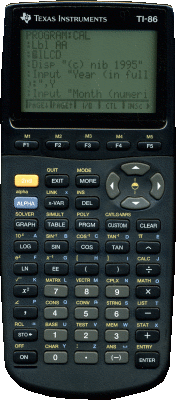

It has been assumed that nonsymbolic approximate math tasks necessitate the allocation of Working Memory (WM) resources.
Non symbolic calculator how to#
Preschool children have been proven to possess nonsymbolic approximate arithmetic skills before learning how to manipulate symbolic math and thus before any formal math instruction. Both visual working memory and symbolic number sense in kindergarten are related to mathematical performance 2 years later, and a combination of visual working memory and NSDs leads to low performance in mathematical performance. Multivariate analyses of variance showed that a combination of visual working memory and number sense deficits (NSDs) leads to the lowest performance on mathematics. Non-symbolic number sense only predicts performance in math problems. Symbolic number sense appears to be the strongest predictor for both math areas (math facts and math problems). Multiple regressions revealed that both visual working memory and symbolic number sense are predictors of mathematical performance in first grade. At the end of first grade, mathematical performance was measured with two tasks, one for math facts and one for math problems. The mean age was 4.96 years at the start of the study and 7.02 years at the end of the study.Īt the end of the first year of kindergarten, both visual-spatial working memory and number sense were measured by two different tasks. 2 years.Ī total of 670 children participated. The aim of this study was to test the DD hypothesis within a longitudinal time span of. It is suggested that real math difficulties appear when both working memory and number sense are weak, here referred to as the double deficit (DD) hypothesis. Read moreĮvidence exists that there are two main underlying cognitive factors in mathematical difficulties: working memory and number sense. Conclusions: It is interesting to evaluate the predictive capacity of these variables, delving into pedagogical issues related to assessment and intervention in mathematics. Discussion: The results support the hypothesis of a deficit in the access to the symbolic numerical representations as the origin of the difficulties in the performance in arithmetic and show that certain skills of general domain (WM) contribute significantly to the development of mental numerical representations. Results: We found that the symbolic comparison and visuo-spatial WM contribute significantly to efficiency in basic arithmetic. Aim: The present study aims to simultaneously evaluate the unique contribution of the basic numerical capacities (BNC-subitizing, counting and symbolic and non-symbolic comparison) and the different components of WM (verbal and visual-spatial) to the explanation of the variance in academic achievement in basic arithmetic, in third-year students of Basic General Education with and without difficulties in basic arithmetic Methodology: A sample of 93 children was evaluated through computerized tests of BNC and working memory tasks: A group of 25 children with arithmetic learning difficulties (ALD) and 68 children without difficulties in arithmetic (NAD). the contribution of cognitive variables of both domains to the arithmetic efficiency. Several studies have evaluated the relations among general domain cognitive abilities (like intellectual coefficient and working memory (WM)) or cognitive abilities of specific domain However, there are a few studies that evaluate simultaneously. Introduction: There are several causes and explanations of the cognitive mechanisms that underlie the deficits of mathematical learning difficulties.


 0 kommentar(er)
0 kommentar(er)
